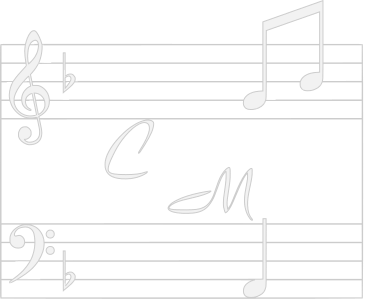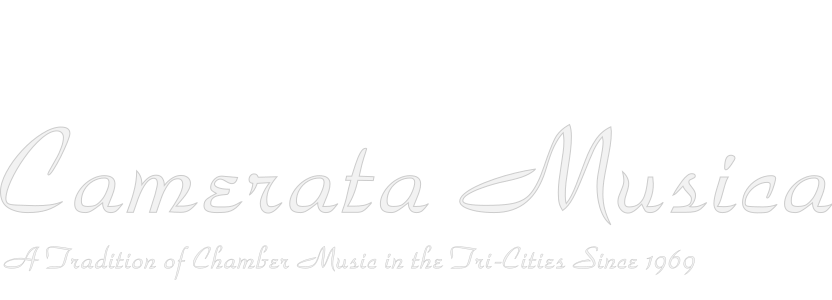Sat., January 26, 2019
January 26, 2019 7:30 pm at Columbia Basin College, Performing Arts Theatre
Colin Scobie, 1st violin
George Smith, 2nd violin
Elliot Perks, viola
Duncan Strachan, cello
Program
Franz Josepf Haydn (1732-1809)
String Quartet in E-flat major, Op.71 no. 3, Apponyi, Hob.III:71
Joey Roukens (b.1982)
Visions at Sea (2011)
Scottish Folk Music (to be announced from the stage)
(intermission)
Ludwig van Beethoven (1770-1827)
Quartet in B-flat major, Op.130
The Maxwell Quartet appears by arrangement with Lisa Sapinkopf Artists, www.chambermuse.com
About the Musicians
1st Prize winner and Audience Prize winner at the Trondheim (Norway) International Chamber Music Competition in 2017, the Maxwell Quartet has been hailed for "great communication" by The Strad Magazine and as “brilliantly fresh, unexpected and exhilarating” by The Scottish Herald. The Glasgow-based Maxwell Quartet is now firmly regarded as one of Britain's finest string quartets, with a strong connection to their folk music heritage and a commitment to bringing together wide-ranging projects and programmes to expand the string quartet repertoire.
The quartet performs regularly across the UK and abroad, at venues including London’s Wigmore Hall, Purcell Room, St Martin-in-the-Fields, and the BBC Chamber Music Proms. Their 2017-18 season includes engagements in Denmark, Norway, Germany, the Netherlands, France and China. Their first North American tour, in January 2019, is to coincide with the release of their début CD, featuring works by Haydn and traditional Scottish folk music.
The Maxwell Quartet consists of four great friends who grew up playing classical and folk music together in youth orchestras and music schools across Scotland. The group officially began in 2010 at the Royal Conservatoire of Scotland, where its founding members met as postgraduate students. The very next year, the Quartet was appointed as the Conservatoire's Young Artists in Residence.
Performing widely across Scotland, the quartet has established a reputation for delighting audiences with their "unnaffected enthusiasm" (North Highland Times) and their "panache and conviction" (Strathearn Herald). The quartet has held residencies at Oxford University, Perth Concert Hall and many chamber music festivals across the UK, including their own Loch Shiel Festival in the Scottish highlands.
Passionate about collaborating with other musicians and art forms, the quartet has worked with world-renowned pianists Benjamin Grosvenor and Jeremy Menuhin as well as a global roster of artists and institutions including Cryptic Theatre, the experimental performance space Wintour’s Leap, the Royal Ballet School, the Scottish-German soul duo Lunir, cinematographer Herman Kolgen, and many more. They have also commissioned works by some of the UK's most dynamic composers including Anna Meredith, Tom Harrold, Mark Simpson and Colin Broom. The quartet regularly broadcasts on BBC Radio Scotland, as well as giving school workshops and children's concerts.
The Maxwell Quartet was mentored by the Endellion Quartet at King's Place, London, and studied privately with Hatto Beyerle, founding member of the Alban Berg Quartet, in Germany.
Program Notes
Haydn:
Although commissioned by Count Apponyi, a good violinist and generous patron of the arts, this quartet was actually written in preparation for Haydn's second trip to London, and the violinist more on Haydn's mind was surely the London impresario Johann Peter Salomon. So the work incorporates several of the tricks Haydn developed to impress (or, in the beginning, subdue) his English audiences. The first movement, for instance, begins with what László Somfai memorably called a "noise-killer curtain," one loud, attention-getting chord separated from the main Vivace material by a full bar's rest. Another London trick is the series of unusual-for the time, almost freakish-modulations in the development section that veer from the sonata-form movement's standard harmonic path. The movement's witty first theme spins along happily for four bars before stopping to check itself with two quiet, bouncy little measures, and continues to repeat that pattern. The second subject is a slippery canon that never quite fires its contrapuntal shot.
The Andante con moto is a set of free variations on two themes, one an informal major-mode humming tune, and the other a minor-mode subject closely related to the first. The two are so similar, in fact, that it can be difficult to determine which is being varied-or if the second theme itself is simply a minor variation on the first. The movement's most notable moment comes in the third variation, in which the often-neglected cello gets the leading voice.
As if emboldened by his cello solo in the slow movement, Haydn allots a brief solo to each instrument in his lengthy Minuet, as if the momentarily dominant player were making a quiet confession to the others. The central trio begins deep in the solo cello, and by the end has risen to a violin part placed well above the staff.
The final movement, Vivace, takes ternary form, with the loping outer sections looking ahead to the Viennese waltz. The middle portion is a mild fugato in which Haydn shows off to the Londoners his superior Teutonic technique. —James Reel
Roukens:
Joey Roukens was born in Schiedam, the Netherlands, in 1982. He studied composition with Klaas de Vries at the Rotterdam Conservatory and psychology at Leiden University. His works have been performed by major ensembles and soloists in the Netherlands and abroad, such as the Royal Concertgebouw Orchestra, the Netherlands Philharmonic Orchestra, the New York Philharmonic, the Orchestra dell’Accademia Nazionale di Santa Cecilia, Britten Sinfonia, and Tokyo Sinfonietta. For a long time, Roukens has also been active in pop music.
Roukens strives to move away from modernist ways of thinking in search for a more eclectic and direct idiom. He seeks to organically integrate elements from highly diverse influences and aesthetics, and thus doesn’t shy away from the use of tonality, references to popular music, vernacular culture, "stealing" from the musical heritage of the past, and the odd trivial turn.
Visions at Sea explores the turbulent voyages that Dutch seafarers made in the 17th century. It uses old Dutch sea shanties carefully woven into a dynamic framework which lurches from moments of serene beauty to ones of wild frenzy.
Beethoven:
Beethoven's last string quartets were composed during the final years of his life between 1824 and 1826. The project began with a commission from the Russian Prince Nicholas Galitzin, an amateur cellist who requested "one, two or three" string quartets. Once Beethoven began work in earnest, he turned out five massive quartets that ultimately become six separate works known simply and profoundly as "The Late Quartets." For decades, these quartets were regarded by most as quite possibly the work of a once great composer now degenerated into a deafness and insanity. (Schubert, Mendelssohn and Schumann thought differently). It was not until the 20th century that the late quartets became widely regarded as profound and transcendent masterworks worthy of entering, if not becoming, the apex of the traditional repertoire.
The third of the late quartets in the order Beethoven composed them, Op.130 was completed in November of 1825. Beethoven and his publisher surprisingly agreed that the finale did not sit well with the rest of the quartet movements. The bristling fugue of epic proportions was deemed "too much" for audiences of the time, and it was detached and published as a separate opus. Beethoven composed a fresh, much lighter finale to complete Op. 130 in its revised, final version. The quartet will be performed tonight in its original version.
Like nearly all of the Beethoven's late quartets, Op.130 can be approached in many ways. Without regard to the well-established elite tradition of quartet form, style and expression, Op.130 presents a surface beauty, technical facility and rich emotional aspect that can't fail to strike a casual listener as truly lovely music with profound tendencies. But seen within a framework of traditional works by Haydn and Mozart, Op.130 is, like the other late quartets, a very odd and possibly incomprehensible departure. Herein lies one sense of the term "difficult" applied to these late works: "difficult to follow" compared to the rhetorical conventions of the time. But surely another meaning behind the term "difficult" is the emotional demands they make they induce in the listener. Throughout the late quartets, one finds extreme emotional states that can, at times, be difficult because they are simply so intense and effective.
Op.130, particularly in its original form, is truly an anomaly from a conventional perspective. Rather than the traditional four movements, it has six. Of these, two are almost laughably short while the original fugal finale was outrageously long and truly "difficult" in every sense of the word. The fourth movement is a triple meter German dance with a trio of a rustic character, but the second movement is also clearly a scherzo of ternary design. Two scherzi? Although the opening movement appears to be in a rather straightforward sonata form (it is far more), the fifth movement is a basic operatic cavatina of surprisingly simple design with an indescribably haunting character nonetheless. The musicologist Michael Steinberg suggests that to the listeners of the day, this must have seemed like a miscellany of movements, more like a divertimento or suite than a string quartet. Musicologist Leonard Ratner provides a convincing analysis that Beethoven was indeed intentionally invoking an antique form of suite complete with Renaissance canzona, a march, an aria and a gigue, a design that practically renders the Grosse Fuge an inextricable part of a grand design.
All of this only reinforces the essential fact that Beethoven was an undaunted pioneer and artistic visionary who created, particularly in the late quartets, truly complicated works of high art that speak on many levels lending themselves to multiple if not infinite interpretations and reactions. They are indescribably compelling works that have mesmerized players, composers, scholars, poets and avid listeners for nearly two hundred years. Perhaps one of their most essential traits is that they can become as "difficult" as one wishes or, miraculously, as direct, simple and obvious as one's willingness to hear and feel. Feel and "understand" them as you can and as you will. It is a project worthy of a lifetime. —Kai Christiansen

